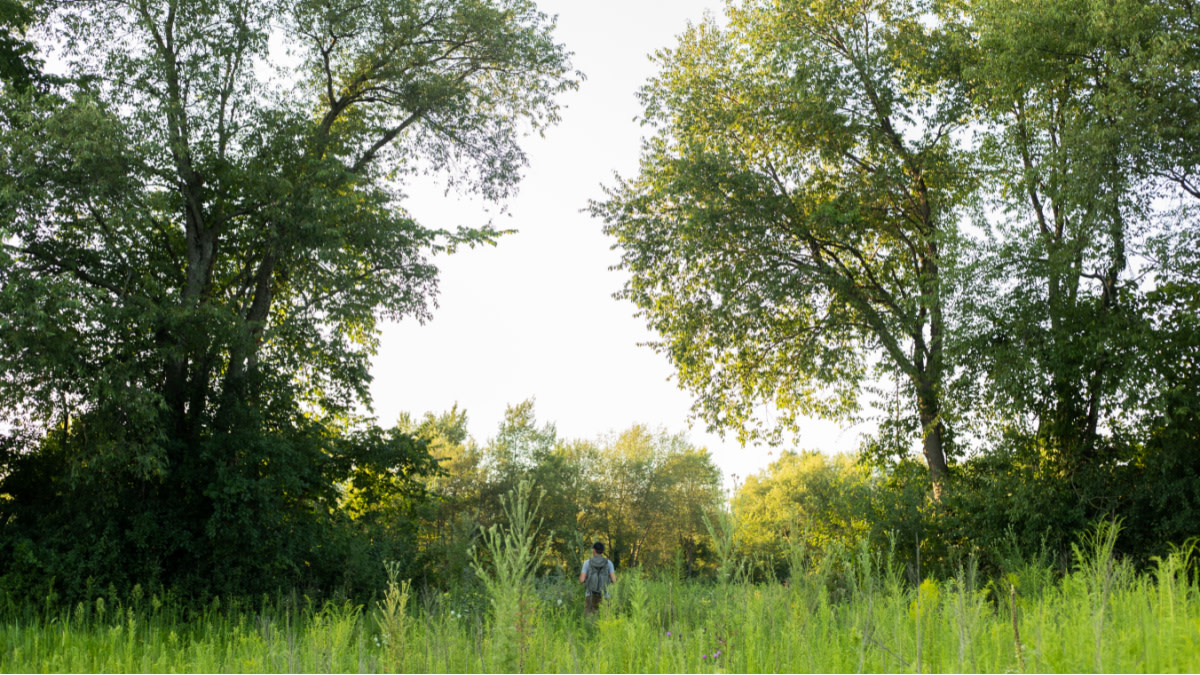
There’s no worse feeling than losing a hunting spot, just as there’s no better feeling than gaining a new one. This is partly due to the fact that unlike familiar ground where you’ve got seasons of good and bad experiences filed away in the memory bank, new properties are all promise.
You don’t know yet that the neighbor likes to drive his quad along the fence lines every night at sunset. Or that the new landowner’s nephew (who you’ll share the ground with) is hellbent on becoming the most successful spot-and-stalk whitetail hunter in existence. Or that the land-owner doesn’t want you hunting near the cattle, which cover the property’s entire 40 acres.
In the beginning, you only know that the land is new to you and the opportunities are unlimited.
This exuberance over a fresh property is warranted but can blind us to the reality of what we need to do to fill tags. I ran into this quite a few years ago when a buddy called me up and said he got us permission to hunt a vegetable farm two miles from my front door.
I’d been drooling over that farm for years and when we first walked it I figured it was going to be the easiest spot to kill a good deer that I’d ever hunted. Because of that (and the fact that so much of the former sod farm was visible and easy to glass) I didn’t take scouting that seriously.
I also didn’t factor in that organic vegetable farmers generally hate deer and will let plenty of hunters on their grounds to kill the carrot-chompers. What started out as a no-brainer kill, turned into a grind as the bucks avoided me and the other hunters. It was humbling.
It wasn’t until I actually walked the property and really dug into every trail, crossing, and bit of sign, that I started to understand what I was dealing with.
By the time I arrowed a good buck on that farm, I was fed up with other hunters, the deer, and myself. I should have treated the farm like I would have when hunting new public land, but I didn’t. It was an experience that has stuck with me and prompted me to never assume I don’t need to scout hard when I get access to fresh dirt.
Of course, this is applicable to private ground because we can most easily put the blinders on when we get the green light to go on exclusive parcels. The same rules apply when we fork over good money to secure a lease. Yet, most of us would never consider not putting together and executing a real scouting plan on public land because that would be a perfect recipe for failure. The same attitude on private land can just as easily lead to a bowl of tag soup, so don’t let it happen.
The first step is to forget about the individual deer and dedicate yourself to learning the dirt.
To accomplish this, nothing beats an in-person investigation. When you gain access to new ground and you have the chance to walk it, walk it. Then walk it again but take a different route. Get into the cover, even if that sucks during the summer. Accept the fact that you’ll spook deer when you do this, but it’s worth it.
Look at the cover as it exists now, but think about what it’ll mean all season long. Make note of fence crossings, river crossings, trails, terrain features that funnel movement, food sources, and water. What does the entire property offer the deer now? What will it offer the deer in October and November? You can’t know everything just from walking the woods in the summer, but you can start to build a real base understanding of a property.
Do this before you ever hang a camera or post up with a spotting scope for a glassing session. There’s plenty of time to get to know what deer live on the acreage. What you really want to know is: what does the land offer the deer? You also want to know how many tree stands are out there and what the hunter pressure looks like. Walk fence lines to see what’s on your property and which neighbors might be straddling the boundary come opening morning. Later, you can figure out what all of this means to your hunting style and strategy.
Check out Wired To Hunt’s YouTube channel for specific things you might find on those first walkabouts. You could identify a buck bed, find a staging area, see a big buck track, locate a watering hole, or figure out where wind swirls. Every piece of data is valuable.
This first layer of this process might require five or 10 boots-on-the-ground missions. Get that stuff over with now, but don’t stop until you know you’ve seen what the property has to offer. The goal is to learn right now, not on opening morning.
Once you do, then it’s time to back off and start relying on a spotting scope and a handful of trail cameras. This allows you to start plugging actual, real-time deer knowledge into the spots you’ve seen in person. Instead of just knowing there’s a pounded fence crossing in the corner of the woods, you’ll figure out who is leaving belly fur in the barbed wire. Better yet, you can do a little math and probably figure out where he came from and where he’s going. This is when a hunt plan can really start to gel.
If you are lucky enough to find yourself with fresh dirt, don’t take it for granted that easy hunting is on the horizon. Make a commitment to truly learn the ground first, long before you start to build a hitlist and request the days off for your rut-cation.
Feature image via Captured Creative.







Conversation